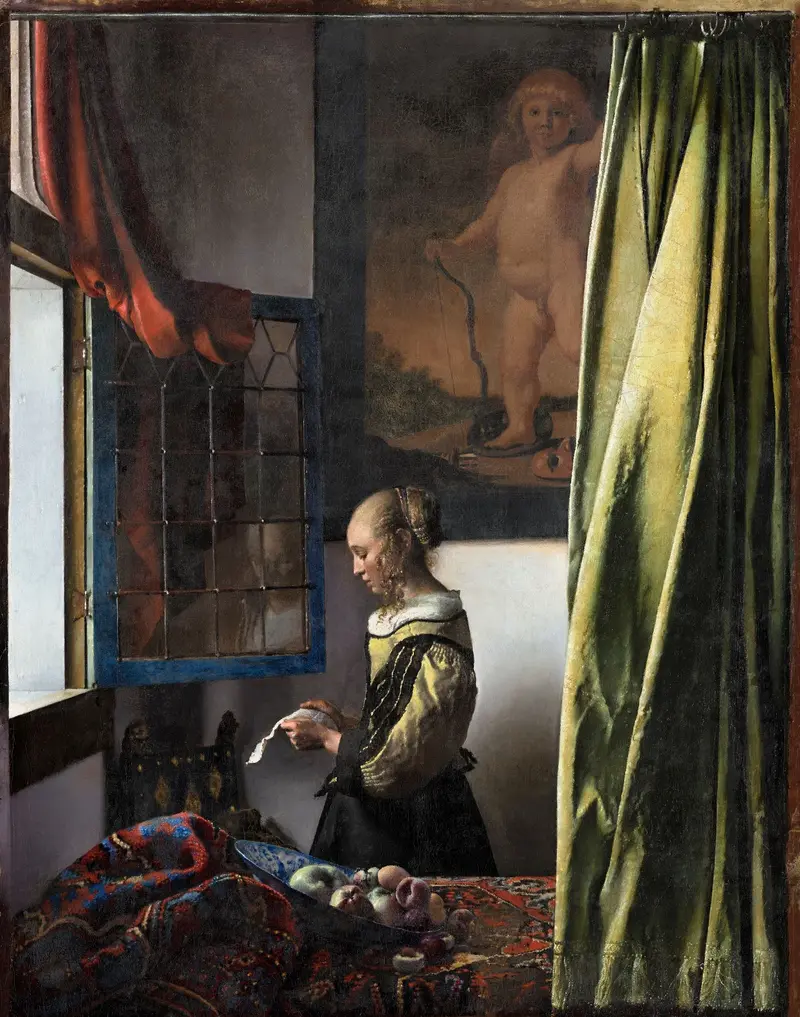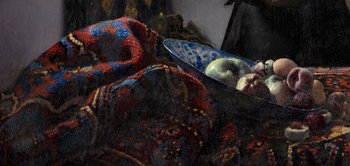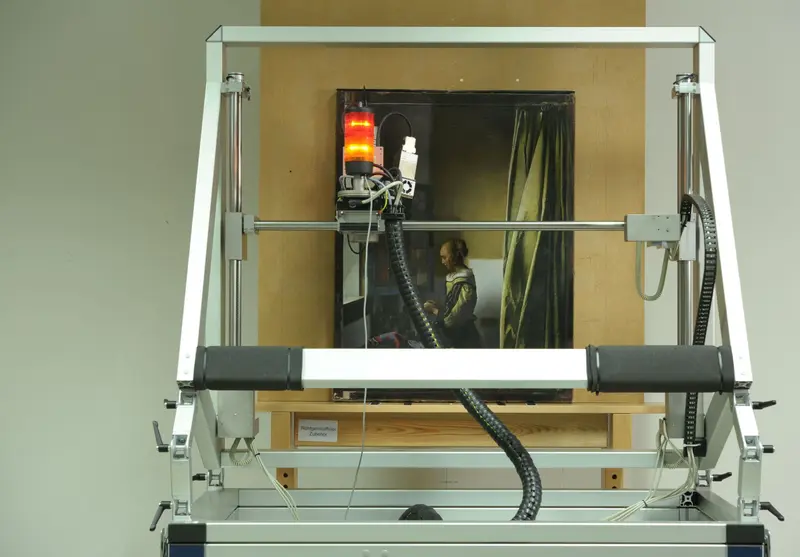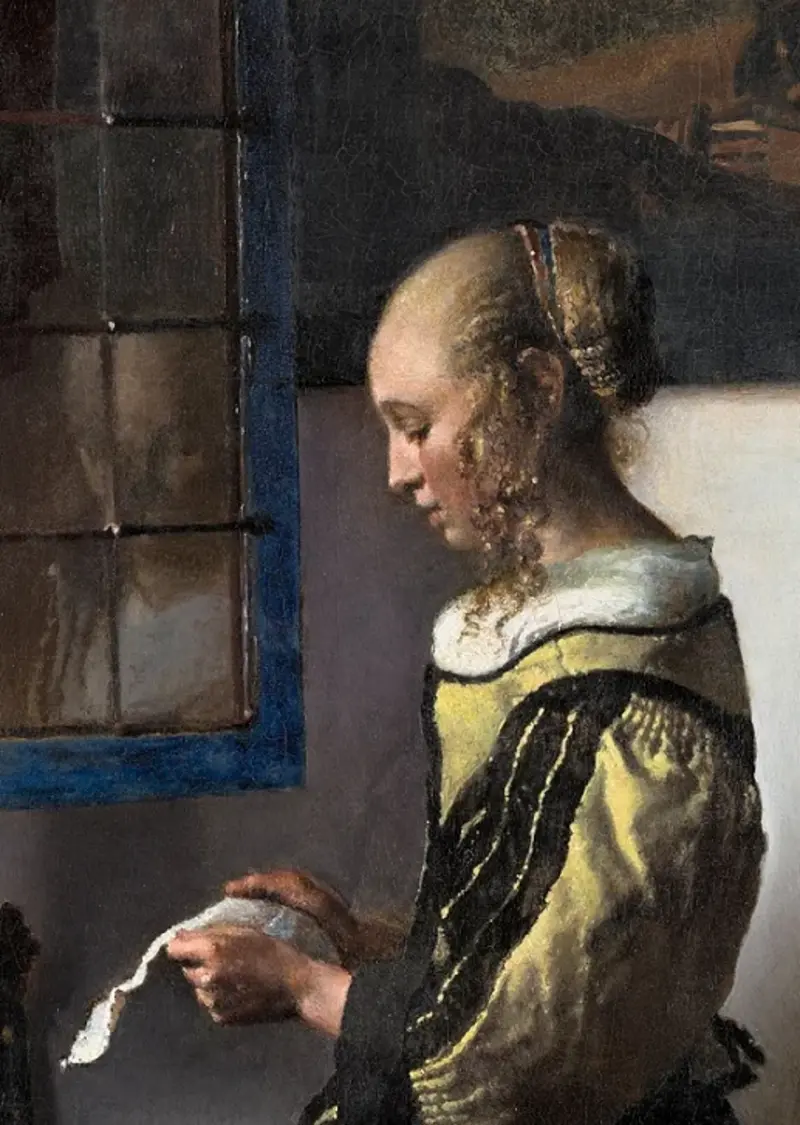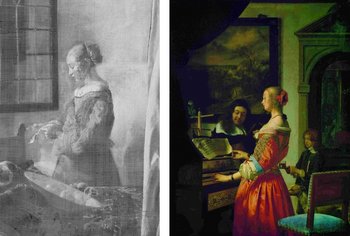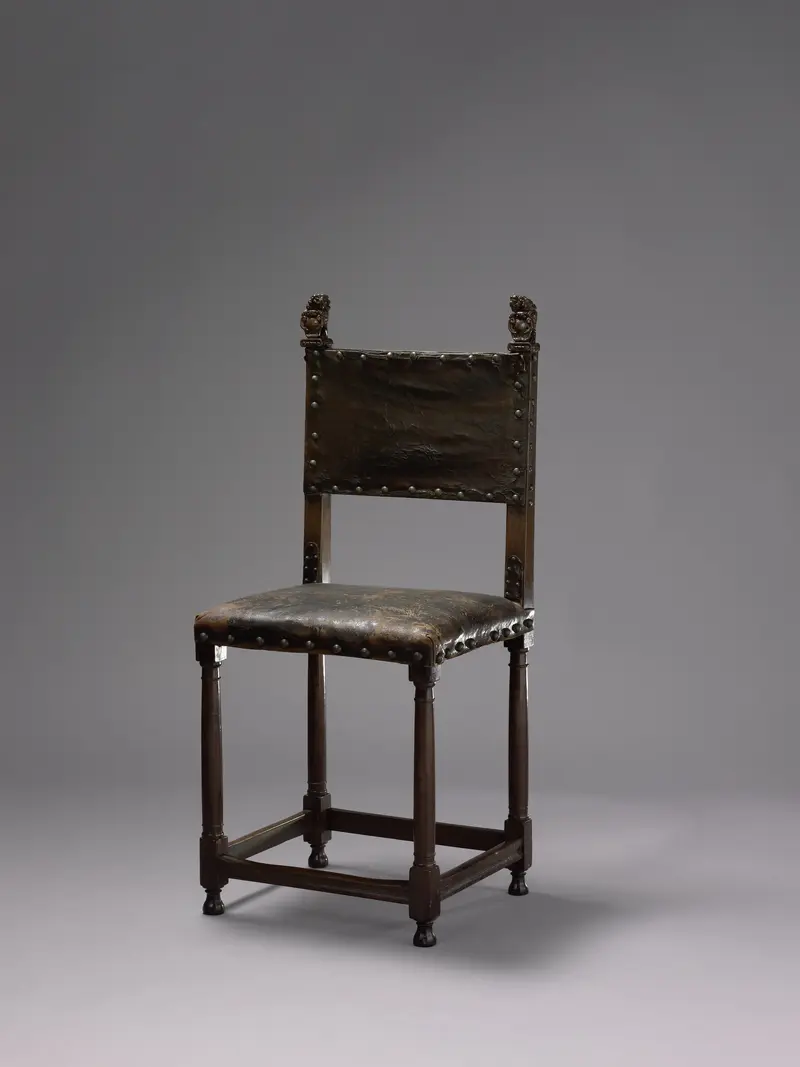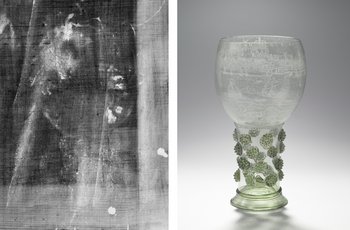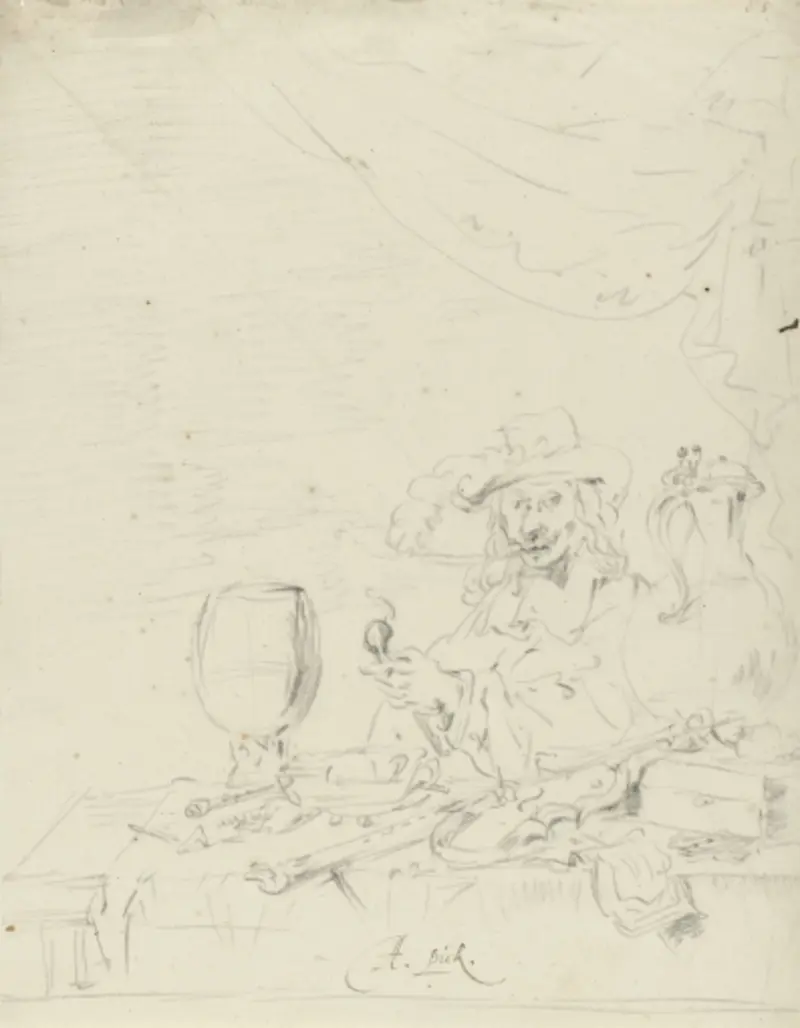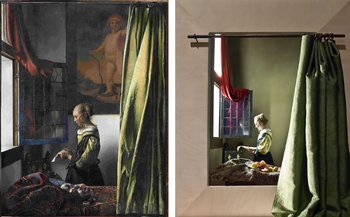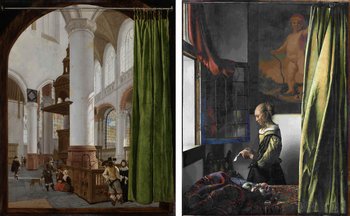The process of creating the painting 3
Over the course of his artistic career, Vermeer paid increasing attention to the issues relating to the depiction of interiors, whereas these matters did not play any role in his known early works. The contours of the room in the “Girl Reading a Letter” are difficult to define, with the left-hand corner dissolving into the shadows. Nevertheless, the chair positioned in front of this corner, and also its shadow, delimit the extent of the room. The visible section of the wall on the left is clearly defined by the bipartite open window with a red curtain slung over it. The girl, whose head is located at the exact centre of the painting, is positioned directly in front of the window. She stands at approximately equal distance from the table in the foreground and the chair on the back wall of this comparatively narrow space. The curtain on the right is not a component of the girl’s room but is clearly in a different image plane located closer to the viewer. It hangs from 10 small rings on a metal rod which seems to be attached to a wooden frame. Having apparently just been pulled aside, the curtain now reveals to the viewer a scene that would otherwise have remained hidden. This seems to have been the only work in which Vermeer used this trompe-l’œil motif (trompe-l’œil: French for ‘deceive the eye’, i.e. painting in such a way as to create the optical illusion that the depicted objects exist in three dimensions). In addition, his compact arrangement of objects with widely varying surface effects creates an almost perfect illusion of space (Fig. 2).

